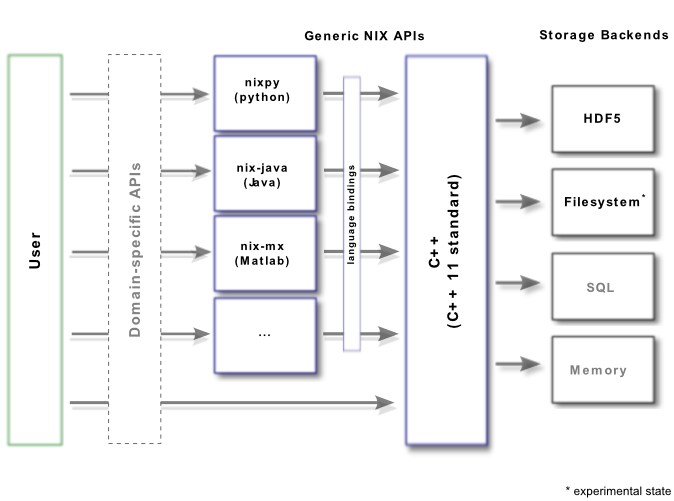Support for standardization¶
Having a well-defined and open data format for storing a vast diversity of scientific data in itself is a cool thing. In an optimal world, and if the data format would be perfect, tools designed for such a generic data model could be used without any other knowledge to, at least, get some basic insights into the data.
One real-world issue is that different (scientific) communities use similar terms to describe (slightly) different things. A very simple example would be the temperature. Large parts of the world would immediately understand a temperature value in terms of degrees Celsius. Other parts of the world prefer Fahrenheit while parts of the scientific world would certainly go for Kelvin.
In other words, at some point we need to agree on definitions. Or, we need to be able to specify which definitions are used.
Standardization of metadata¶
The metadata part of the NIX data model is basically the odml data model and implements the standardization methods used in the odml-libraries. That is, it is possible to use specifications made in so called terminologies (collections of names and definitions of sections and properties). In odml, several of such terminologies have been suggested.
Standardization of data¶
In NIX almost all entities have a type field which can be used to indicate the applied definition. In our example code within this documentation, we used very unspecific types like nix.demo, nix.sampled, or nix.stimulus_segment. The type is intended to be used as a namespace in a hierarchical fashion. Hierarchical levels are separated by dots. For example nix.sampled could indicate that the entity contains data that is stored according to the “nix” definitions and is regularly sampled in one dimension. A tool, that knows about such types, could select the appropriate measures to display the data.
Domain-specific high-level APIs¶
So far, the NIX project is mainly concerned about the technical side and not so much about the definition of terms and types. That is, we provide the low-level APIs to read and write the data. All other responsibilities are left to the user. The figure below shows the relations between the different NIX libraries and how we envision future development towards domain-specificity.

The NIX ecosystem so far consists of the generic C++ and python libraries that directly write to the storage backend (only HDF5 is fully supported at the moment). Further, we provide language bindings for java and Matlab that work via the C++ library. In our vision, domain-specific APIs will be developed that use the generic entities and wrap them in the terms that are used in a given community. A first step into this direction is the nix storage backend in *NEO* that exposes NIX constructs as NEO entities.